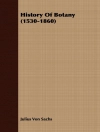Femtosecond lasers opened up new avenue in materials processing due to its unique features of ultrashort pulse width and extremely high peak intensity. One of the most important features of femtosecond laser processing is that strong absorption can be induced even by materials which are transparent to the femtosecond laser beam due to nonlinear multiphoton absorption. The multiphoton absorption allows us to perform not only surface but also three-dimensionally internal microfabrication of transparent materials such as glass. This capability makes it possible to directly fabricate three-dimensional microfluidics, micromechanics, microelectronics and microoptics embedded in the glass. Further, these microcomponents can be easily integrated in a single glass microchip by the simple procedure using the femtosecond laser. Thus, the femtosecond laser processing provides some advantages over conventional methods such as traditional semiconductor processing or soft lithography for fabrication of microfluidic, optofludic and lab-on-a-chip devices and thereby many researches on this topic are currently being carried out. This book presents a comprehensive review on the state of the art and future prospects of femtosecond laser processing for fabrication of microfluidics and optofludics including principle of femtosecond laser processing, detailed fabrication procedures of each microcomponent and practical applications to biochemical analysis.
Table of Content
Fundamentals of femtosecond laser processing.- Fabrication of microfluidic structures in glass.- Fabrication of micromechanics.- Fabrication of microoptical components in glass.- Fabrication of microelectronics in glass.- Integration of microcomponents.- Applications of microfluidics and optifluidics fabricated by femtosecond laser.- Summary and outlook.
About the author
Koji Sugioka is recognized worldwide as a leading scientist in the area of laser micro and nano processing. He has made important contributions to both fundamental research on laser-matter interactions and applications in the areas of laser micro and nano processing including industrial applications. He is known for his work on laser doping, laser etching, laser surface modification, laser-induced selective metallization, microfabrication of transparent materials, VUV laser processing, laser surface nanostructuring, 3D micro and nano fabrication by ultrafast laser, and fabrication of integrated microchips for biological analysis based on laser-based technology. He is a senior research scientist at RIKEN – Advanced Science Institute and a guest professor at Tokyo University of Science and Tokyo Denki University. He received B.E., M.E. and Ph.D degrees in electronics form Waseda University in 1984, 1986 and 1993, respectively. He has received nine awards for his research, inventions and contributions in the area of laser microprocessing. He published approximately 140 articles, gave approximately 90 invited talks including plenary, keynote and tutorial presentations at international conferences and approximately 100 invited talks at domestic conferences and has about 30 patents or pending patents. Based on Thomson ISI Web of Knowledge, his articles have been cited over 2, 000 times, and his H-index is evaluated to be 26. He is also the editor-in-chief of the Laser Micro/Nanoengineering, a board member of Laser Institute of America (LIA) and Japan Laser Processing Society (JLPS) and the SPIE Fellow. Ya Cheng is an active researcher in the ultrafast photonics related fields, including femtosecond laser micromachining, ultrafast nonlinear optics and strong field laser physics. He is a professor of the Shanghai Institute of Optics and Fine Mechanics (SIOM), Chinese Academy of Sciences, and the deputy director of the State Key Laboratory of High Field Laser Physics, SIOM. He received his B.S. degree from Fudan University in 1993 and Ph.D degree from SIOM in 1998. He has published more than 100 papers in peer-reviewed journals, and given more than 60 invited talks at international conferences. His papers have been cited more than 1, 600 times and his current H-index is 21 (Database: web of science). He is an editor of the Laser Micro/Nanoengineering and Chinese Physics Letters and the Deputy Secretary General of the Chinese Optical Society.












